“I’m sorry I’m late with my book”, Jimmy Palmiotti said rather humbly, opening a “spotlight” panel on March 31st 2013 at WonderCon, and asked the audience if he ought to put on some “background music”. Amanda Conner, his co-spotlighter, and Palmiotti explained, tongue in cheek, that if the panel appeared “random”, months of deep thought had allowed them to “plan it to be random”. Attendees were already engaged by the humor, and probably by their avid fandom of both Conner and Palmiotti’s work, in this panel Conner and Palmiotti hoped would be “interactive”.
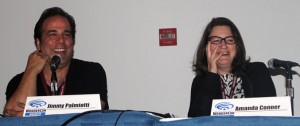
Their first big collaboration, where both provided their own input for a personally satisfying project, involved the VAMPIRELLA comic when Conner asked Palmiotti to create a script where she would be allowed to portray the title character “on the toilet”. Palmiotti, in gallant fashion, concocted a plot involving laxative-laced candy on Halloween, a child-eating demon, and a heroic devourer in Vampirella. Palmiotti encouraged writers to play to the desires of artists and “give them stuff they really want to draw” to produce great results. That’s been their “theme ever since”, he said. Comics have been their “career of choice”, Palmiotti reflected, even though their were “other choices” possible. Conner’s other choices, for instance, included working in advertising, and prior to that, owning a comic book store.
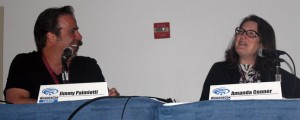
This speculation was interrupted by a question from the floor about the “timetable” on the planned collaboration CAPTAIN BROOKLYN. Conner explained that she’s working on a “glut of covers” at the moment, but when she’s finished those off, she’s going to stop other work and focus on BROOKLYN. Conner confirmed that they are “thinking about” the possibility of doing a Kickstarter for the project. CAPTAIN BROOKLYN, Palmiotti explained, is about a garbage man in Brooklyn, with a “house full of cats” and “Russian massage parlor girls next door” who has to devise a financial means of helping his sickly grandfather. On top of that, he comes to possess “superpowers that really don’t help his life”. Palmiotti says the book, as scripted, is “funny” but he trusts Conner to “bring it down to earth” and “ground it”, a power he feels is her particular strength as an artist. Her work “has a soul”, he said, “The eyes have a soul”, but he jokingly threatened her with finding a replacement if she doesn’t pick up the production pace.
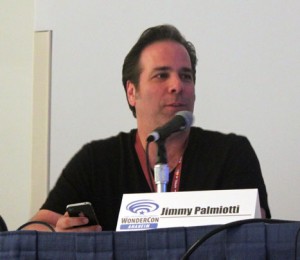
“Now we’re the cool kids and can talk about stupid stuff”, Palmiotti commented, including channeling child-like behavior to geek out about things like films. Both Conner and Palmiotti revealed that they are avid film watchers, and particularly Palmiotti, who goes to the movies a couple of times a week. Conner focuses on particular films that catch her attention, which she watches “repeatedly”. As a kid, she was a huge fan of The Poseidon Adventure, then Star Wars, The Terminator, The Long Kiss Goodnight, and more recently, Kiss Kiss, Bang Bang. Palmiotti’s most recent film enthusiasm is for the film Upside Down, particularly fascinated by this love story featuring reverse gravity fields and conflict between differing worlds.
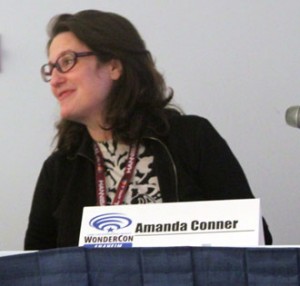
Palmiotti said that Conner “became obsessive with every building” she drew, as well as clothing. The “layout” for Laurie’s house, apparently, was drawn from a single panel featuring a single room in the house in WATCHMEN. Conner built an “entire house” around a living room contained in the original comic. Palmiotti reminded the audience, who then applauded, that Conner’s work on SILK SPECTRE has since been nominated for a Reuben Award in “good company” with Evan Dorkin, and Bernie Wrightson, two of their favorite creators.
I asked Conner and Palmiotti what, particularly, they are looking for that they find attractive in a project in terms of character and plot. Palmiotti replied that he’s looking for several things, including the “soul of a character”, “what they want”, “what they fear” and “something at stake”. He’s very drawn to idea of romance in comic books. “It’s there even in JONAH HEX”, he said. “I like the idea of two people who have something in common, a goal”, Palmiotti explained. Even if he’s writing “horrible people”, he’s “looking for a likeable trait”. His example prompted a lot of laughter from the audience, proving the maxim “It’s funny because it’s true”. He said that even “Hitler’s dog thought Hitler was awesome” because the dog, being fed and tended by his master, could find a likeable trait. You have to “find those things in the characters”, he said, and ask yourself, “Why would we care?”.
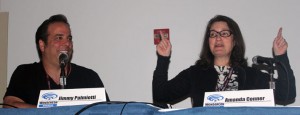
An audience member’s question about Conner’s work drawing BARBIE in the past led to an energetic discussion of Wonder Woman as a character and the possibilities of new directions for her books. “I would love to write WONDER WOMAN”, Palmiotti admitted; he sees her as “more down to earth, less superior” than some other creators since being “too perfect” is a turn-off, though he thinks some solid work has been done on WONDER WOMAN. He observed that in some WONDER WOMAN comics he’s read, the creators “make everyone else more interesting” than Wonder Woman and he can’t understand that approach. “She’s the most interesting person in the room”, he pointed out, not her surrounding characters. Of course, he added, he would only want to write WONDER WOMAN with Conner as the artist on the project.
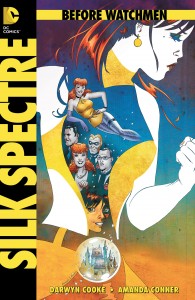
Conner and Palmiotti certainly presented a fully interactive panel, so much so that when panel time ran out, it felt like an interrupted conversation with plenty more to say. Hearing stories from their daily life and their work suggested that the divide, especially for these collaborators, is artificial, with influences moving back and forth constantly. Maybe that’s the secret to their wide-ranging output in comics, and a glimpse of the reason behind the energy they continually bring to the industry. The panel illustrated well the benefits of the “spotlight” approach to con appearances giving enough time and focus on particular creators to generate a conversation with their audiences.
Photo Credits: All photos in this article were taken by semi-professional photographer and pop culture scholar Michele Brittany. She’s an avid photographer of pop culture events. You can learn more about her photography and pop culture scholarship here.
Hannah Means-Shannon writes and blogs about comics for TRIP CITY and Sequart.org and is currently working on books about Neil Gaiman and Alan Moore for Sequart. She is @hannahmenzies on Twitter and hannahmenziesblog on WordPress.


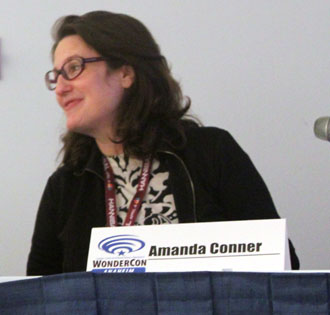



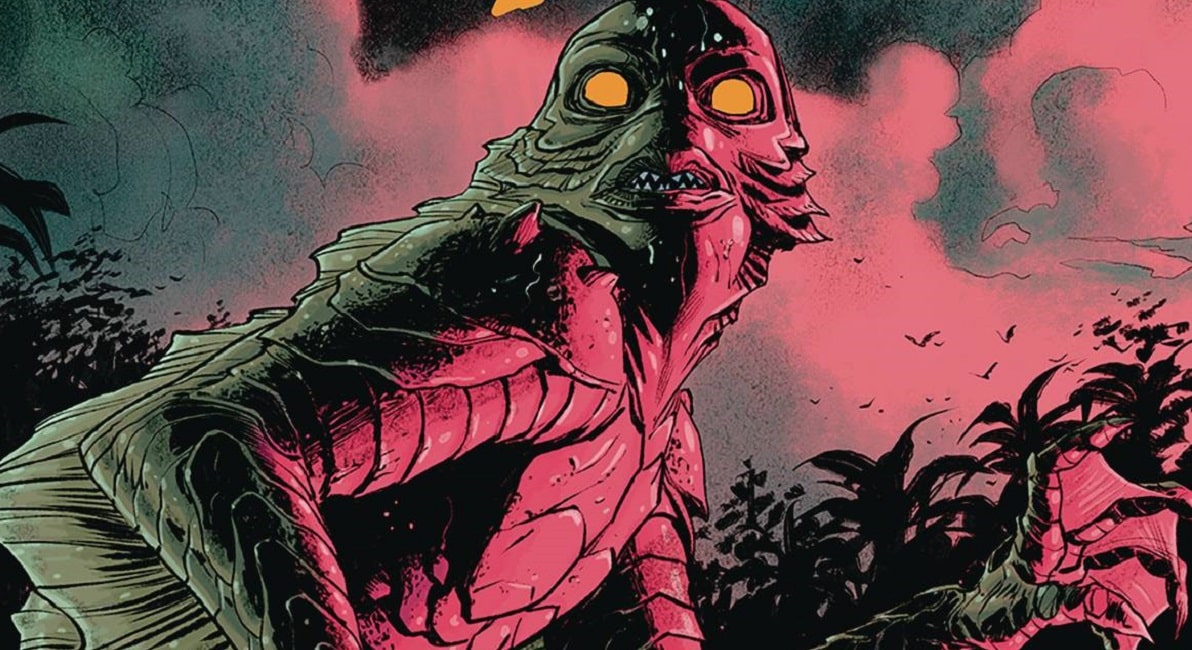

I am in agreement with you about the spotlight on writers, artists, marketers, et. al. as insightful and enjoyable, yet sprinkled with sage advice by the people in the industry. There is definite fluidity to the creative process of comics, a theme reinforced by many panelists throughout the weekend and especially Palmiotti and Conner.
Comments are closed.